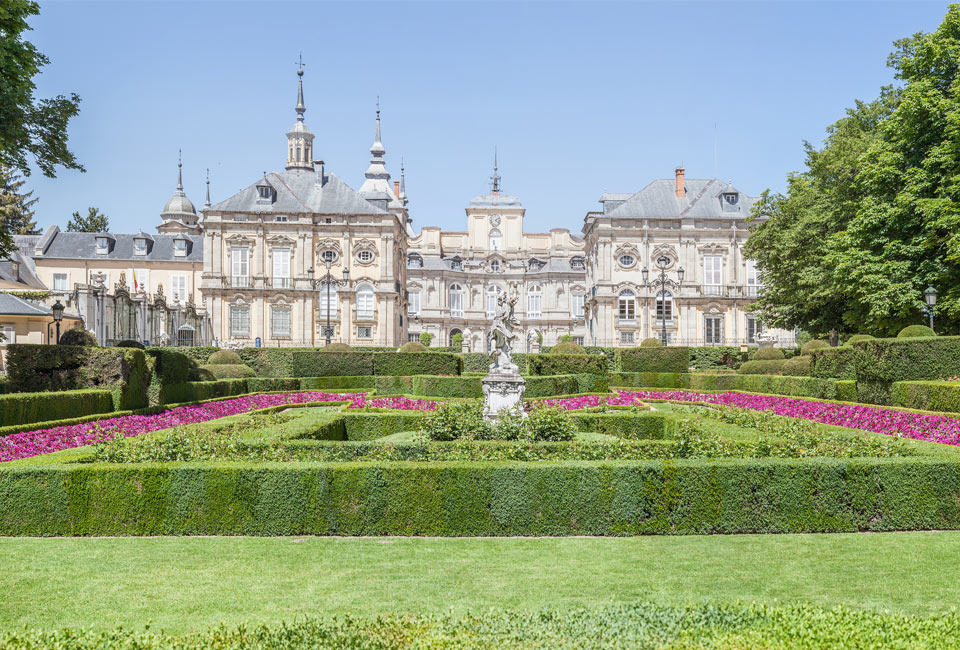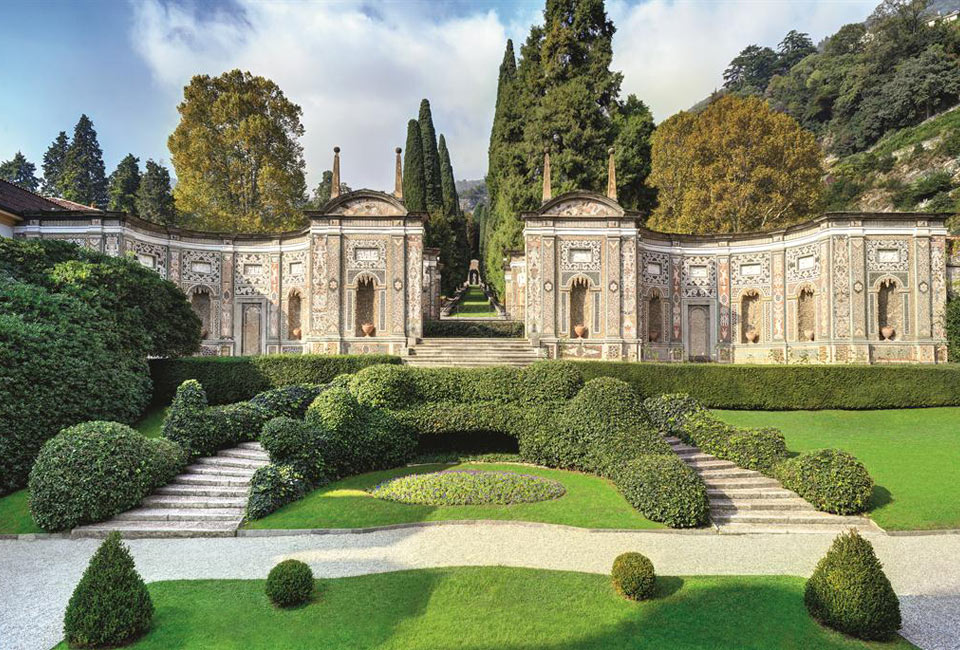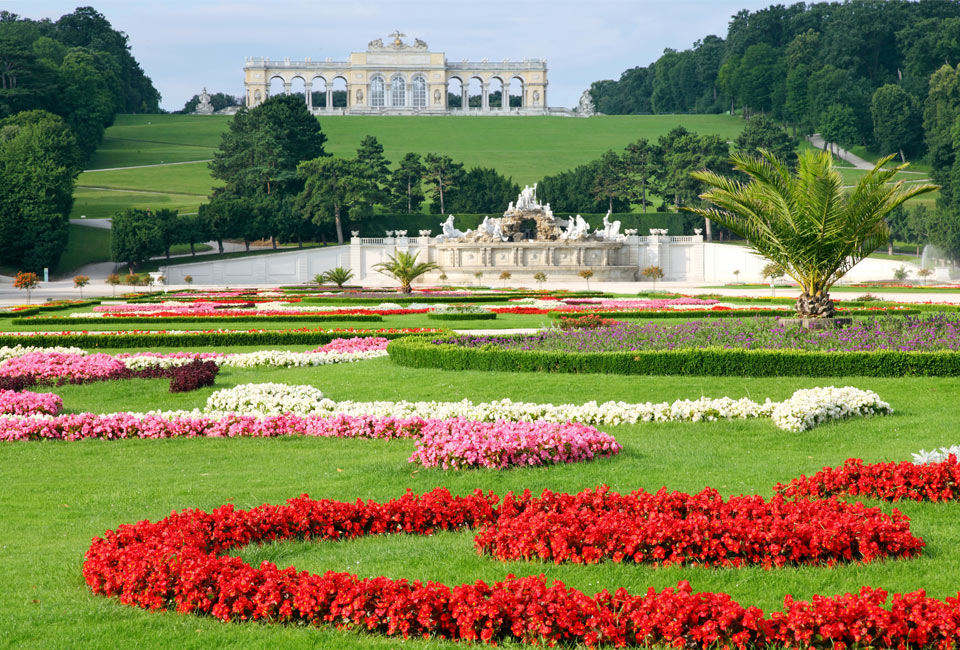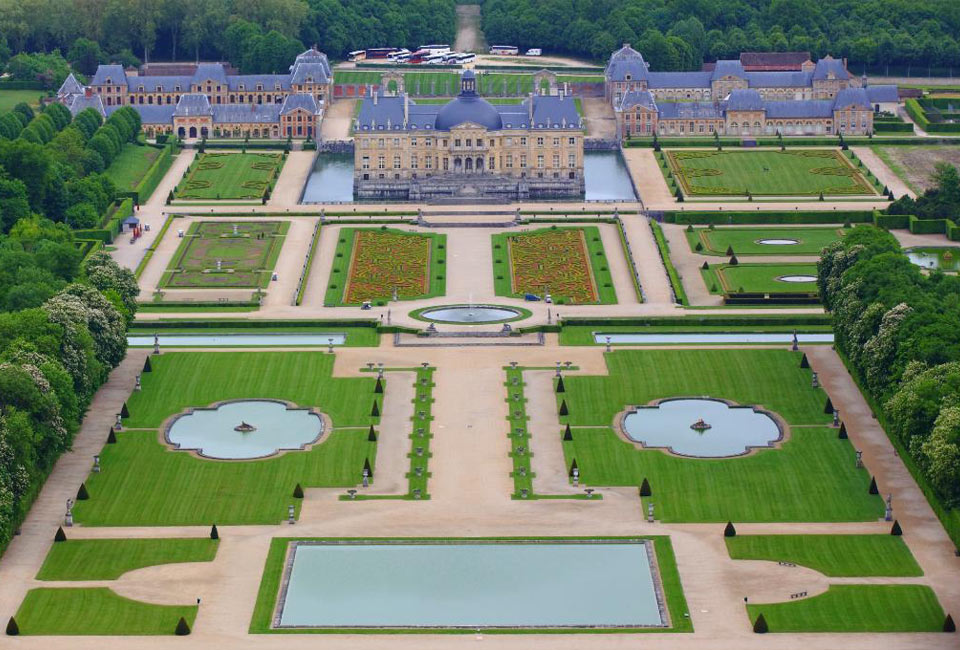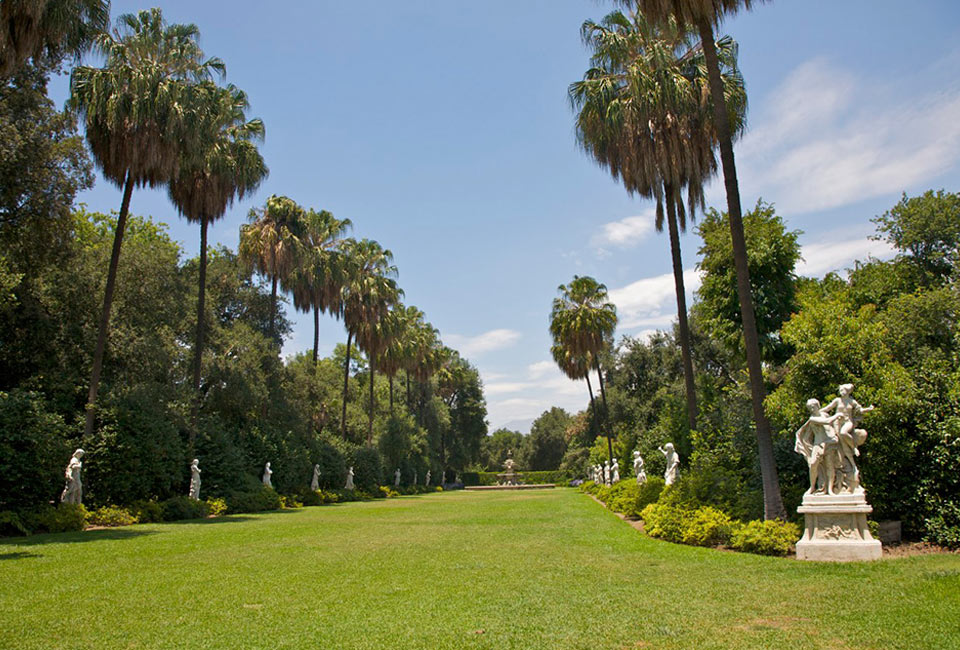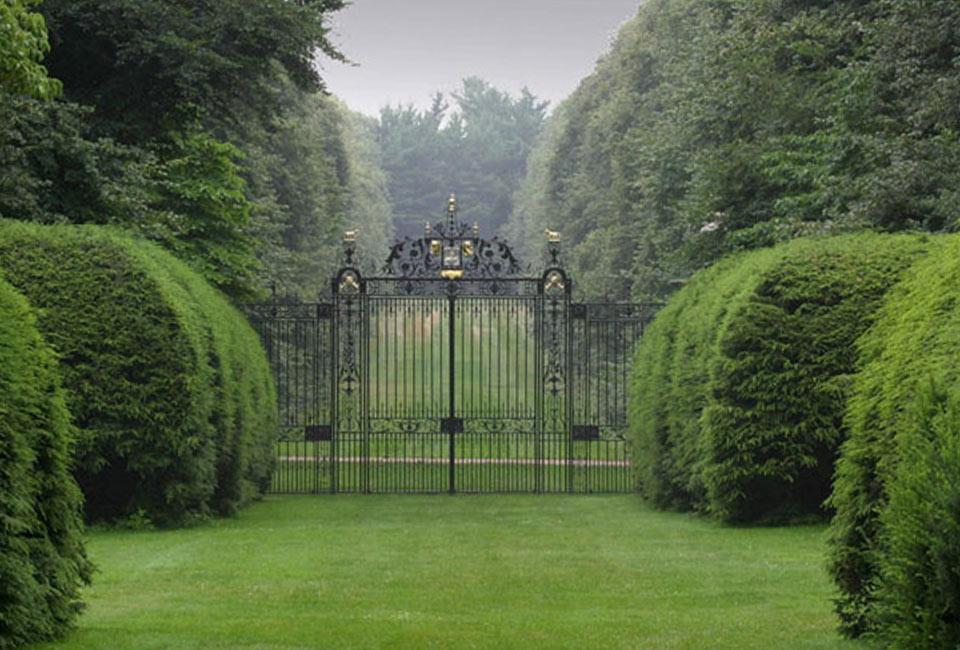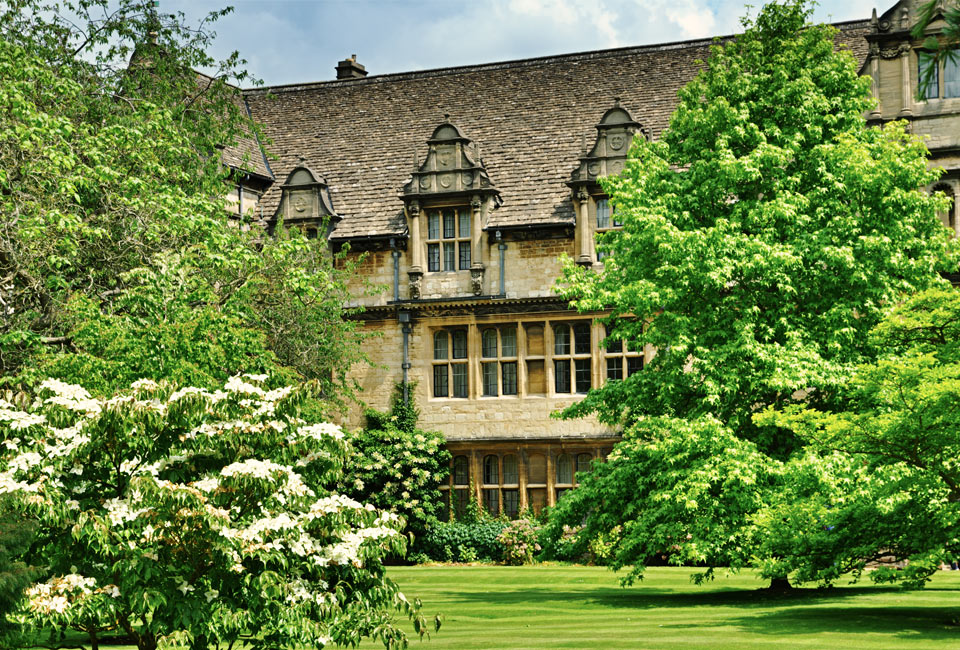“My design work has been inspired by gardens all around the world. Still on my wish list to visit are gardens in Japan, South Africa and Morocco. These 10 are just a sampling I find special for a variety of reasons. My all-time favorite garden is the one where I grew up and my mom still tends to today — where she brought a little piece of France to the North Shore of Long Island — and not only taught me how to garden, but to ‘paint with flowers.'” — Maria Villalba, interior and floral designer
1. Royal Palace of La Granja de San Ildefonso, San Ildefonso, outside of Madrid
Situated on hilly terrain, with wonderful distant mountain views, the gardens of the Palace de San Ildefonso incorporate formal parterre gardens, low, clipped hedges, elaborate use of water, mythological statues and pavilions, long avenues leading away from the palace — all of the hallmarks of the grand French 18th-Century gardening style — but with none of the crowds, tour buses or commotion. It is truly a whimsical, peaceful place — built as a retreat (its name means “farm”) not as a seat of power, and it shows. Built by Philip V, the first Spanish King from the Bourbon dynasty, the gardens are modeled after Versailles (where he was born). The architect used the natural slope of the mountains to create water-shooting fountains — all naturally. Think of San Ildefonso gardens as a more relaxed Versailles — clearly designed to impress but also to lift the spirits. Visit in the summer when the cool mountain air provides the perfect respite from the city heat.
2. Metropolitan Museum of Art’s Rooftop Garden, New York
The Metropolitan Museum is very dear to my heart and I look forward to the opening of the Roof Garden each spring. It’s not only an amazing outdoor space with inspiring and thought-provoking contemporary art installations (my favorite being the Starn brothers’ Big Bambú), but it’s also the best rooftop in NYC to enjoy al fresco cocktails on a hot summer evening. Most of all, it boasts stunning bird’s-eye views of my all-time favorite garden in the world: the magnificent Central Park.
3. Villa d’Este, Tivoli, outside of Rome
A disgruntled cardinal consoled himself for his (five) failed papal bids by building these gardens — the most advanced and elaborate the world had ever seen, and complete with an impressive concentration of grottos, terraces, fountains, stunning views of Rome in the distance. Cardinal Este tried to impress the Pope and the world with his immense wealth — but, moreover, with his amazing scientific abilities. Using the most advanced hydro-engineering techniques, evoking the incredible engineering skills of the Romans, these gardens are a scientific and artistic marvel. Like Schönbrunn and Vaux-Le-Vicomte, this garden is all about grandeur, intimidation and power. (He built it so the guests had to walk up to the steep hill to greet him, arriving breathless.) Highlights include the long terrace of the Hundred Fountains, the Grotto of Diana and the Water Organ fountain, which uses hydraulic organs to play music. This fantasy garden is the perfect place to visit on a hot summer day — when you can really appreciate the cooling aspect of the fountains and shady trees.
4. Schönbrunn Palace, Vienna
I love this garden for its sheer grandeur and hubris. Built in the late 17th Century on the grounds of a former royal hunting lodge, Schönbrunn (“beautiful Spring”) was commissioned by Emperor Leopold I whose intention was to build a palace larger than Versailles. Thankfully, when the estimate from the architect came in, he scaled it back to a more modest dwelling of 1,441 rooms. Fifty years later an ambitious Maria Theresa developed the “park” into a formal French-style garden and it is indeed one of the grandest palaces and gardens in Europe. The differences from Versailles, however, are apparent; the terrain is flatter, the avenues wider and more rigid, the colors brighter and the design more formal and restrained. But like those at Versailles, the Schönbrunn gardens intimidate, awe and impress the visitor. For an unforgettable experience, visit on summer weekends when the Viennese philharmonic performs along with fireworks.
5. Vaux-le-Vicomte, outside of Paris
Talk about fireworks and drama! When Fouquet, the finance minister of Louis XIV, first moved into this palace, designed by the dream team of Le Brun, Le Vau and Le Nôtre, he held an elaborate party to show it off, complete with a play by Molière and a fireworks show, inviting the entire court and Louis XIV. The King was highly impressed by the splendid palace — but less impressed by Fouquet. Convinced that Fouquet had embezzled state funds to pay for the palace, the King threw him in jail (where he spent the rest of his life) then hired the same team to build his own royal palace, Versailles. The highly manicured gardens at Vaux-le-Vicomte are truly magnificent — and hard to relax in (just thinking of the 18,000 workers they engaged is enough to make you exhausted). This was a place designed to intimidate and show off. One can’t help but be impressed by its sheer scale — and the dozens of delicate highly manicured parterres. In these gardens with their long boxwood-lined gravel avenues you not only can see a wonderful perspective of the Chateaux — but also of French history — reminding the visitor about the importance the message your home conveys.
6. Huntington Botanical Gardens, Los Angeles
Like many of the tycoons of his time, Henry Huntington was determined to build himself a legacy: a library and museum rivaling Frick and JP Morgan. But the purpose of the breathtaking estate and gardens he built near Pasadena was not just to house his impressive collections of rare books and art; he was trying to woo his late uncle’s widow, the enigmatic Arabella, and lure her away from her Fifth Avenue mansion (they wed after 13 years of courtship). I love the gardens for their variety — here you can see examples of Japanese, herb, desert and Chinese gardens. The rose garden alone has examples of over 1,400 varieties. As I am slightly obsessed with roses (and use them in my arrangements whenever possible), I have spent a lot of time in this garden. Visit the Huntington between late March and early November.
7. The Ivy Restaurant, Los Angeles
As soon as you pass through the white picket fence with multicolored Christmas lights you know you are in flower-and-food heaven. Dining at the Ivy on Robertson is a dizzying feast to the senses and truly brings the garden to the table. Everywhere you look you are bombarded with flowers — wonderful combinations of roses in pinks, yellows, oranges, purples, all carefully arranged with mint leaves and greenery in rustic hand-painted pottery. These iconic arrangements are everywhere — on the tables, in the rafters, climbing the brick walls, at the bar, in the powder room. The colors alone awaken the senses. It is just an amazing experience all in all.
8. Old Westbury Gardens, Westbury, New York
This impressive Georgian manor brings you back to the famous grandeur of the Gold Coast. Meticulously maintained by the Phipps family and a team of curators, these 200 acres of gardens a mere 45 minutes out of NYC always transport me to a different era. I love visiting the gardens in early spring when the flowering trees and lilacs abound, but June is equally stunning with the peonies, roses, poppies and water lilies. A tranquil sanctuary now surrounded by sprawling suburbia, Westbury Gardens is truly a magical place where the silence is only disturbed by the sound of chirping birds — and if you close your eyes you can almost see the polo matches and garden parties of a bygone era.
9. Rosemary’s Restaurant, New York
In the heart of Greenwich Village this little jewel of a restaurant brings a whole new dimension to the term farm-to-table in NYC. They have their own rooftop garden where they cultivate herbs and vegetables. Talk about fresh! The environment is rustic and hip and charming in an understated and refreshing way. And the fact that it is adjacent to the famous Jefferson Market Garden, a lush oasis on East 10th Street, is just one more reason to head over and visit.
10. Trinity College Gardens at Oxford University, UK
The traditional English Romantic style is a refreshing change from the formal, stiff French look. With undulating paths, idealized view of nature and many grottos, lakes and benches, the tranquility of the traditional English garden encourages you to pause and contemplate nature. While the French tried to exert control over their environment — think of how they shape their trees and hedges à la Edward Scissorhands — the English relinquish to the glory of Mother Nature and work in tandem with the landscape. I used to visit the gardens at Trinity College with my late father who was a Rhodes Scholar. Now when I spend time amidst the courtyards of the university and gaze at the 500-year-old buildings covered in ivy, brightly shining gold in the afternoon summer light, watching the students scurrying to class in their gowns, and walking by grass so green you just want to lie down and have a picnic with Pimms cocktails and strawberries and cream, I feel close to my Dad — and aren’t gardens designed to take you places? While it is always beautiful to visit in the summer, the fall boasts some beautiful foliage.

